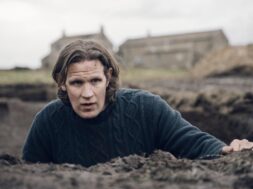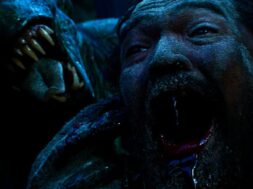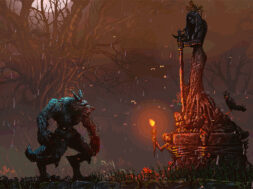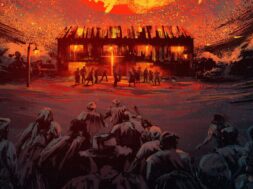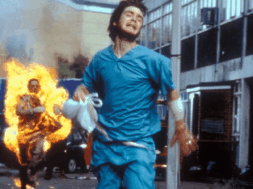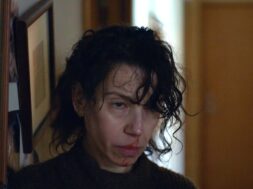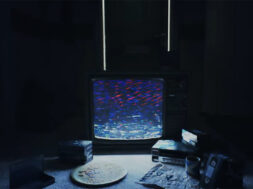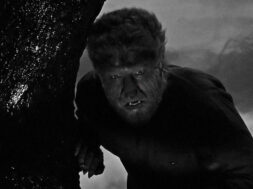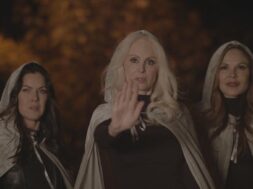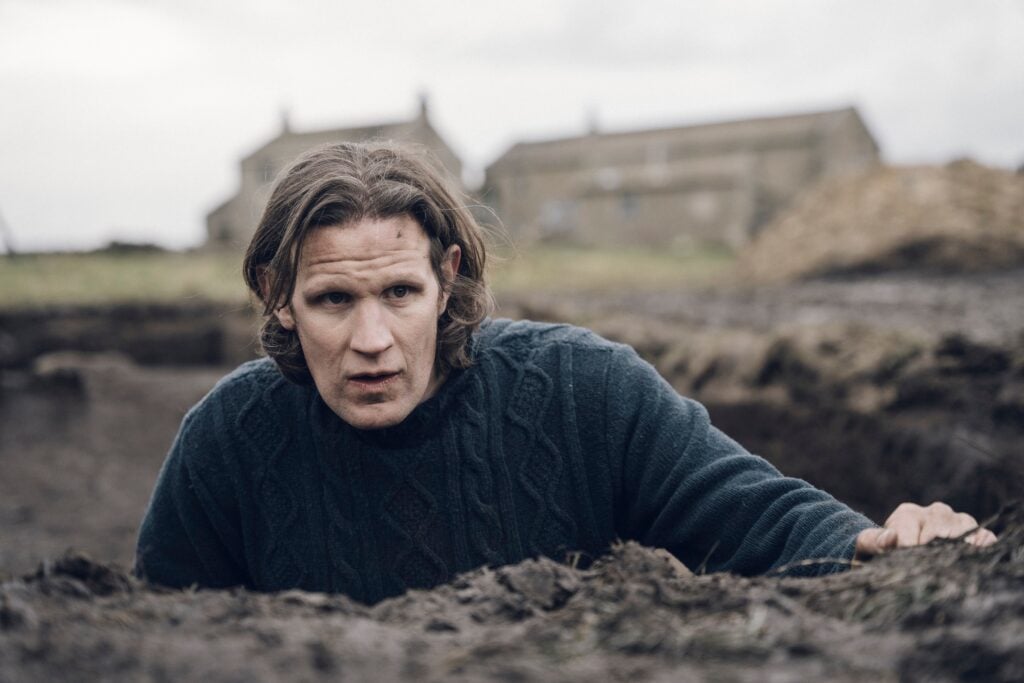
Warning: Starve Acre spoilers below.
If you or I casually gouged a hole in the ground and found an ancient artifact within that veritably seethes with malevolence, we’d probably backfill the damned thing posthaste and haul ass to civilization. The average folk horror protagonist doesn’t have quite that much wisdom, but they at least know to stop shoveling when they unearth bad news: Think A Field in England, Rawhead Rex, Blood on Satan’s Claw, The Lair of the White Worm, Sennentunschi, Black Sunday, or Mother of Tears. Happily, few folk horror characters have the psychology required to keep at it with pickaxes, trowels, and brushes once they hit the wicked motherlode.
Richard, Matt Smith’s cable knit-clad co-lead in Daniel Kokotajlo’s new film, Starve Acre, is an exception to the brief. Charitably, he’s an archaeologist and a bereaved father; to dig is in his nature, and to do so past the bounds of recommendation is in his neurosis. Let the man kick up his yard! He’s just lost a child! Who wouldn’t act a little strange under that circumstance?
But there’s a difference between grief recovery and compulsion, and Richard leans so hard away from the behaviors of typical folk horror characters as to distinguish himself from them entirely. It’s not simply that he refuses to cease his efforts; it’s that he decuples them, almost as if in tacit defiance of folk horror tropes.
This is terrible news for Starve Acre’s subsidiary characters, but absolutely wonderful news for the rest of us watching safely from the comfort of a theater, because Kokotajlo uses the opportunity of Richard’s fanatical digging to construct a truly breathtaking shot of that fanaticism’s consequences.


Major spoilers below.
It happens in the movie’s first act that Owen (Arthur Shaw), Richard’s son with his wife Juliette (Morfydd Clark), is struck with a fatal asthma attack; Kokotajlo carefully sets up the boy’s condition early on, tying it loosely to the tale of Jack Grey, an enigmatic local folk legend and an echo from Richard’s own childhood. (Think Robin Goodfellow or the Green Man.) Before the film’s events, he and Juliette were urbanites. The farm they call home in the story’s present is the same one Richard grew up on. He knows Jack Grey well.
Juliette and the audience are less familiar, of course, so Owen’s sudden death feels like a fae punishment inflicted on him and his parents by an entity that remains a question mark even when the credits roll. Blame Jack, or the family’s location; they’re too far from the nearest hospital for Owen to survive.
Juliette and Richard both try to weather their anguish in their own ways. She entertains seances conducted by Mrs. Forde (Melanie Kilburn), a hippie-dippie spiritual neighbor who, in keeping with another folk horror trope, hides an affinity for Jack behind a well-meaning, kindly veneer. Richard takes his tools and toys to the pasture and uncovers a rabbit skeleton. This is fine, if morbid. What’s abnormal is that the skeleton slowly, gorily develops musculature, a circulatory system, and fur over days and weeks, eventually resurrecting into a handsome hare with a businesslike stare.


The rabbit’s rebirth supports the visual inversion of the notion that in folk horror cinema, what’s buried in the dirt is best left there. As the critter gradually regains its flesh and comes back to life, Richard continues exhuming his pasture; he’s seeking the root system of a great old tree, once upon a time a communal spot used for hangings.
The tree, like Jack, is a memento of Richard’s upbringing. Digging up the past literally means digging up his youth figuratively, a joint undertaking that demands more than one measly site to fully realize. So, as Juliette burrows into her bed covers, Richard plumbs the soil. He keeps busy. We do not appreciate just how busy until Adam Scarth, Kokotajlo’s cinematographer, follows Smith in a tracking overhead shot on a rainy dusk. It isn’t a hole Richard has dug in his field, but a legion of them, uniform in their exacting geometry: Straight, rectangular lines peppering the land, like a discarded blister pack of pills or an empty truffle box, kissed by mud and tinged by tragedy.
The image is striking in the broad context of folk horror, where people rarely persist in scooping up the earth when they stumble upon sinister baubles interred beneath. The Blood on Satan’s Claw, Piers Haggard’s landmark in folk horror cinema, exemplifies the stark terror of finding something buried in the dirt that’s best left there in the first place.
Haggard’s film bakes a dreadful jolt into its commencing discovery, a fur-patched skull rocking an intact eyeball, and invests viewers in the alarm of Ralph Gower, the hapless farmer unfortunate enough to have brought the grisly remains back to the surface. Through Richard’s obsessive excavations, Starve Acre inverts Gower’s shock, a fundamental moment in folk horror history. Imagine that if, instead of turning heel and scampering off, Ralph eagerly looked for even more gruesome caches in his tract. That’s more or less Richard’s response to retrieving the rabbit’s bones.
Starve Acre treats the rabbit’s rebirth with a careful hand as a pseudo-rebuke to folk horror mores, too. Kokotajlo designates the miracle neither as strictly good nor strictly bad, though the firm disdain the critter holds for Juliette’s sister Harrie (Erin Richards), who comes to stay after Owen’s death, is a mild red flag.
In a way, the rabbit, which Juliette and Richard come to accept as Owen reincarnated, reads like an offering made to them by the land, when films like Starve Acre might otherwise go the opposite direction, bringing these mourning people a woodland critter to care for seems like both a condolence and appeal from nature itself. Though, in time, it is clarified that the rabbit isn’t given to them without cost. (This feeds into Starve Acre’s final scene and image, which feel like an intentional riff on a specific moment in Robert Eggers’ The Witch and therefore requires a separate essay to unpack.)
Normally, the land takes. In Starve Acre, the land gives. It just expects a little kickback in return. Here, the movie bends folk horror’s expectations within reason. It’s that shot of Smith traipsing through the pasture that nearly breaks them.
What does it take for a character in a film like Starve Acre to look for solace under the earth, then continue to look once they find it? What makeup must a person have that allows them to break from convention and frankly reject common sense? Maybe it takes the unthinkable, the loss of a child, perhaps, or the lingering effects of paternity under occult influence.
Richard’s own dad was fixated on the tree, and Jack Grey. His archaeological enterprise could be a reaction to his experiences as a kid. The roots of his labor, whatever they might be, carve out a unique identity for Starve Acre in the folk horror canon.
Starve Acre is now playing in theaters and available On Demand.
